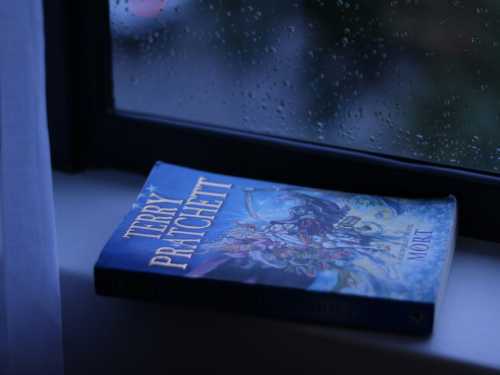
Save this storySave this storySave this storySave this story
During the past decade, the journalist Taylor Lorenz has been known for writing about Internet influencers from within legacy media, translating the arcane laws of online virality for the traditional news consumer. Her career highlights include writing articles that brought to the mainstream such slang terms as the Gen-Z taunt “O.K., boomer”; publicly identifying Chaya Raichik, of the previously anonymous right-wing troll account Libs of TikTok; and breaking news of influencers being courted at the Biden White House. Her book “Extremely Online,” published last year, chronicles the rise of influencerdom in a tone of rosy inevitability, casting the emergence and the monetization of online fame as forms of civilizational achievement. Lorenz’s journalism has been amplified, for better and for worse, by the fact that she has always been extremely online herself, provoking and participating in pitched discourse battles. Alongside her recent work, as a full-time columnist for the Washington Post, she maintains a YouTube channel, a Vox Media-distributed podcast, a personal TikTok account, and multiple Instagram meme pages. And now, as of this month, she is going all in on being an online creator. On October 1st, she announced that she was leaving the Post to launch User Mag, an independent publication on Substack, in order to “pursue the type of reporting on the internet that has become increasingly difficult to do in corporate media.”
The circumstances of her departure from the Post suggest, not for the first time, that Lorenz and legacy journalism had reached a point of irreconcilable differences. (Digital media is a small world; I have known Lorenz for more than a decade, since before she worked as a reporter.) Nearly two months before her announcement, Lorenz posted a private Instagram story featuring a photo of President Joe Biden and the caption “War criminal :(”— apparently referring to the U.S.’s support for Israel’s war in Gaza—which sparked outrage that she was betraying the principle of journalistic neutrality. (The phrase was a reference to a meme derived from a comment that the musician Lucy Dacus made in response to Barack Obama on X last year.) The Post carried out an investigation of her work for evidence of bias, but announced no findings; still, Lorenz never resumed publishing stories in the paper. At Puck, Dylan Byers reported that the Post “determined Lorenz violated the paper’s standards and had no desire to continue employing her.” In a recent phone conversation, Lorenz denied this and told me that her decision to leave and pursue independent journalism was not a direct result of the incident. “It’s not like I was, like, ‘Oh, the Post got mad at me for something, I’m quitting.’ I’ve wanted to do this for a long time,” Lorenz said. (The Post sent me a statement confirming that Lorenz chose to resign and added, “We wish her the best.”)
Lorenz has long been a vocal critic of traditional journalism’s slowness to embrace digital channels such as YouTube and TikTok that increasingly dominate young audiences’ attention. Her path through legacy media institutions was wandering and marked by public scrutiny. (She is in her late thirties but has kept her exact age a secret, because of what she calls her “crazy stalkers,” though doing so has only fuelled fervid online speculation.) She began her media career in 2011, as a social-media editor for the Daily Mail doing audience development. She freelanced on the side for online publications including the Daily Dot, then moved into full-time reporter roles at Business Insider, the Daily Beast, and The Atlantic, becoming a star of a beat focussed on social-media trends and celebrities—subjects that were becoming more and more of a public obsession even as she covered them. Lorenz was included in Fortune’s 2020 “40 Under 40” list and became a Nieman Fellow at Harvard University. As her profile grew, in part through her hyperactivity on social media, she attracted the attention of trolls, particularly on Twitter, who complained about her coverage, critiqued her physical appearance, and made her, somewhat ironically, a symbol of everything they hated about legacy media. In 2019, she joined the Times, where she became a target of right-wing commentators, including Tucker Carlson, who in one Fox News segment called her complaints about online harassment an example of “powerful people claiming to be powerless.”
Over time, Lorenz’s always-on social-media presence and taste for scrapping publicly with figures in technology and politics seemed to conflict with the Times’ increasingly strict rules governing its reporters’ comportment on social platforms. In 2021, she mistakenly called out the investor Marc Andreessen on Twitter for using a slur in a live chat, and was met yet again with an outsized online backlash; in reality, it was Andreessen’s partner, Ben Horowitz, who’d used the slur. (Lorenz later wrote that she regretted the error.) In 2022, she left for the Post, but she already appeared to be moving past her desire to work within media institutions. She told Vanity Fair at the time, “Mainstream media organizations have kind of struggled to figure out how they deal with talent.” As she tells it, her subsequent experience at the Post only confirmed this feeling. She was hired as a columnist for the Style section, but, after a mistake in a story she wrote on the Amber Heard–Johnny Depp defamation trial caused more scrutiny, was moved to the Business section, which houses the Post’s technology coverage. When her editor there, a veteran journalist named Mark Seibel, retired, earlier this year, she felt adrift and considered quitting. (She mourned on Threads with such messages as “I’m actually going to have a mental breakdown lol.”) Her coverage fell to more iterative updates on the careers of online celebrities, such as the YouTube star MrBeast. She chafed at the demands of being a beat reporter as she observed her influencer subjects and collaborators—now increasingly referred to by the lofty label “creators”—leveraging their audiences on digital platforms for sponsorship deals and investment capital. In 2024, Lorenz told me, she no longer sees a reason to remain associated with the mainstream media. “I don’t need it for credibility,” she said. “I don’t need it to reach an audience. I don’t know what it does other than connote prestige for a shrinking amount of people.” She added, leaning into exactly the sort of rivalrous drama that plays well online, “Legacy media sucks, it’s crumbling, and, by the way, I’m going to dance on the grave of a lot of these places.”
In some ways, Lorenz’s decision feels belated. Around 2020, a wave of high-profile journalists left traditional outlets to take lucrative deals to launch newsletters at Substack. Lorenz told me that Substack offered her a deal back then, but she turned it down because she felt she needed the imprimatur of an institution to “get more eyes on my work” and persuade people to “take it seriously.” In the years since, the insurgent creator economy has tempted more journalists away to run upstart operations, and consumers have grown increasingly accustomed to paying piecemeal for access to individual writers. Johnny Harris, formerly a video producer at Vox, developed his own documentary YouTube channel that now has nearly six million subscribers and covers subjects ranging from the criminal investigations of Donald Trump to the threat of China invading Taiwan. In August, the video producer Becca Farsace left the Verge to commit full time to her own YouTube channel, citing the fact that her old employers said she was not guaranteed the rights to content on her social-media channels. “It made me feel like the Verge owned me,” she said in a launch video for her channel, which hosts gadget reviews and now has more than a hundred thousand subscribers. Matthew Yglesias, who decamped to Substack from Vox (a site he co-founded) in 2020, says he has accrued roughly eight-thousand paid subscribers, and, according to Business Insider, he is “likely grossing at least $1.4 million a year.” The Free Press, started, in 2021, by the former Times columnist and anti-woke culture warrior Bari Weiss, recently raised about fifteen million dollars at a hundred-million-dollar valuation; even Jane Pratt, the old-school magazine editor behind Sassy and Jane, recently launched her own paid Substack. While traditional journalistic media has faltered, prompting waves of layoffs at newspapers and digital-media companies alike, the creator economy writ large has boomed; Goldman Sachs recently found that the sector, encompassing both entertainment and journalism, is worth a quarter billion dollars and has the potential to “roughly double” by 2027.
Nevertheless, it is not easy or simple to succeed as a creator, which Lorenz, as a longtime chronicler of the Internet, knows as well as anyone. She told me that, in preparation for her departure, she worked methodically to build channels of access to her own fans outside the Post. Earlier this year, she launched her podcast, “Power User,” and began posting more frequently to a neglected Substack newsletter and to a YouTube channel she’d maintained since 2022, which now has more than twenty thousand subscribers. The trend of journalists going solo has coincided with the creator-ification of journalism even within legacy institutions. Many publications now expect their writers to double as on-air talent. The Times and the Wall Street Journal have started broadcasting TikTok-esque videos of their journalists explaining current events. (I recently filmed a social-media video for The New Yorker; I was discouraged from quitting my day job by one comment that likened my voice to “two balloons rubbing” together.) Still, being an independent creator requires not only a willingness to perform but also a knack for the grind of entrepreneurship. Harris, the video producer now running YouTube channels, told me, “Suddenly you’re the sales team of a media company and the journalist and the project manager and the fact checker,” Harris said. “It’s way too much to expect people who just want to do good journalism to be able to do well.”
Some creators are successful enough that they can build a new editorial infrastructure to support their independent work, importing a bit of the old media model into the new. Harris’s YouTube channel now has a staff of seventeen full-time employees. At times, Substack has hired editors for some of its newsletter writers. But the rise of solo journalism has had a way of unveiling what journalists call “raw copy”: the unedited, often sloppy first drafts of pieces which in the traditional media industry never see the light of day. An independent writer may seem more trustworthy to readers when what she writes is untouched by an institution’s editorial process. But untouched sometimes also means underdeveloped. As Emily Sundberg, the creator of the popular business-and-culture newsletter “Feed Me,” put it, “We’re definitely seeing the unbundling of the star staff writers that once made up our favorite magazines and newspapers.” She continued, “Some of them were greatly improved by the assignments, judgment, and prose surgery of their editors.”
Of course, none of this is relevant if writing per se is only an ancillary goal. Lorenz told me, “I don’t want to be a full-time writer. I want to be an Internet personality.” In creator-driven journalism, what matters most is hypervisibility through an embrace of every conceivable form of digital distribution at once. Controversy is as good for audience development as scoops, and without a standards board the only arbiter of quality is the creator herself. Now that Lorenz is no longer beholden to a larger institution, she will be able to post whatever she likes and respond to the haters however she pleases, so long as her new clients—her subscribers and advertisers—see fit to support her. As the media analyst Brian Morrissey put it to me, “She’s a bit of a lightning rod, she’s a bit dramatic. Those things are absolute assets in the broader information space, and they’re liabilities in institutional media.” (Lorenz told me, “What I’ll say, on the record, is every single President that I’ve ever seen in my lifetime is a war criminal.”)
The question is whether this new paradigm will prove more hospitable than legacy media was, in her mind, to the work of doing reporting about the Internet. So far, there are signs that the institutional fustiness she bridled against won’t be easy for her to cast off—workaday journalism, after all, is less easy to make entertaining than the antics of getting attention online. Days after she left the Post, Lorenz published her first piece of sponsored content to Instagram, an ad for a conference hosted by Bloomberg. On Monday, she published her first story to User Mag, about a Snoopy-themed meme account on X that had come out as pro-Trump. I was expecting something voicey and frenetic, an insider’s look into the guts of the Internet from a creator-reporter finally writing from in the midst of her subjects. Instead, the piece read just like a newspaper article. ♦
An earlier version of this article misidentified the section at the Post to which Lorenz was moved.
Sourse: newyorker.com






